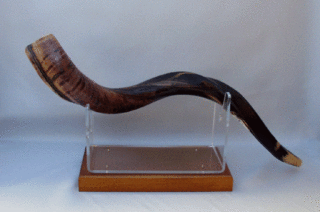Yom Kippur

Today the Jewish high holy day of Yom Kippur continues.
Our late Holy Father, John Paul II, described Judaism as our “elder brother in faith.” It is very important for all Christians, and most certainly all Catholics, to study Judaism, at least in some form, as our faith was born from it.
Remember – Jesus, all the apostles, Mary, Joseph, John the Baptist, Zachariah, Elizabeth and most of the disciples were Jews. Most of the first members of the Church were Jews.
The most enjoyable and fascinating class I ever took in the seminary was on Jewish Studies. It was co-taught by a Benedictine monk and a Jewish rabbi. Part of the course included attending services for the high holy days at the synagogue, attending a bar mitzvah, and attending a regular Sabbath service as well. The course was funded in part by B’nai B’rith.
As a result, you will sometimes read on this blog comments about Judaism, especially in the context of relation to Christian thought and Catholic liturgy.
Yom Kippur is a high holy day – the most important one, and always occurs on the 10th day of Tishri, the seventh month of the Jewish calendar (Judaism uses a lunar rather than a solar calendar). This feast is commanded by Adonai (the LORD) in Leviticus 23:26-32.
It is the Day of Atonement – a day set aside for Jews to atone for the sins committed against the LORD. Sins committed against other people require the Jew to seek that person out, and to reconcile with them before Yom Kippur.
The day is a day of total fast, no work, no food, and no water. Services are held at the synagogue both nights and during the day.
Two important events occur during the feast.
- On the first night (Wednesday evening) the singing of the haunting melody of the Kol Nidre begins the feast. Kol Nidre translates “all vows” and is sung to the LORD asking Him to annul all personal vows made during the following year. Historically this was very important to Jews that were forcibly converted (under threat of violence) during the Spanish Inquisition. Singing of the Kol Nidre allowed these ones to tell the LORD that they acted under duress, and were still true to Him in their hearts and minds.
- The next evening (Thursday) the feast concludes with the Ne’ilah service – during which the ark containing the Torah remains open for the entire service – necessitating all to stand for the entire liturgy. Blowing of the shofar (a ram’s horn) concludes the service and the holy day.

We pray today for all Jewish people, the first to receive the word of God, and who continue to hold a special place in the Lord’s heart as His Chosen People.
PS: To those confused by the two-day timing of the feast, please remember that Jewish time is reckoned from sunset to sunset. So the feast begins on Wednesday evening and lasts until Thursday evening. Those who pray the Liturgy of the Hours will recognize that Catholics still honor the Sabbath (the Lord’s Day, Sunday) in this way. Sunday Evening Prayer I begins on Saturday evening and the Lord’s Day continues until Night Prayer on Sunday night.

0 Comments:
Post a Comment
<< Home